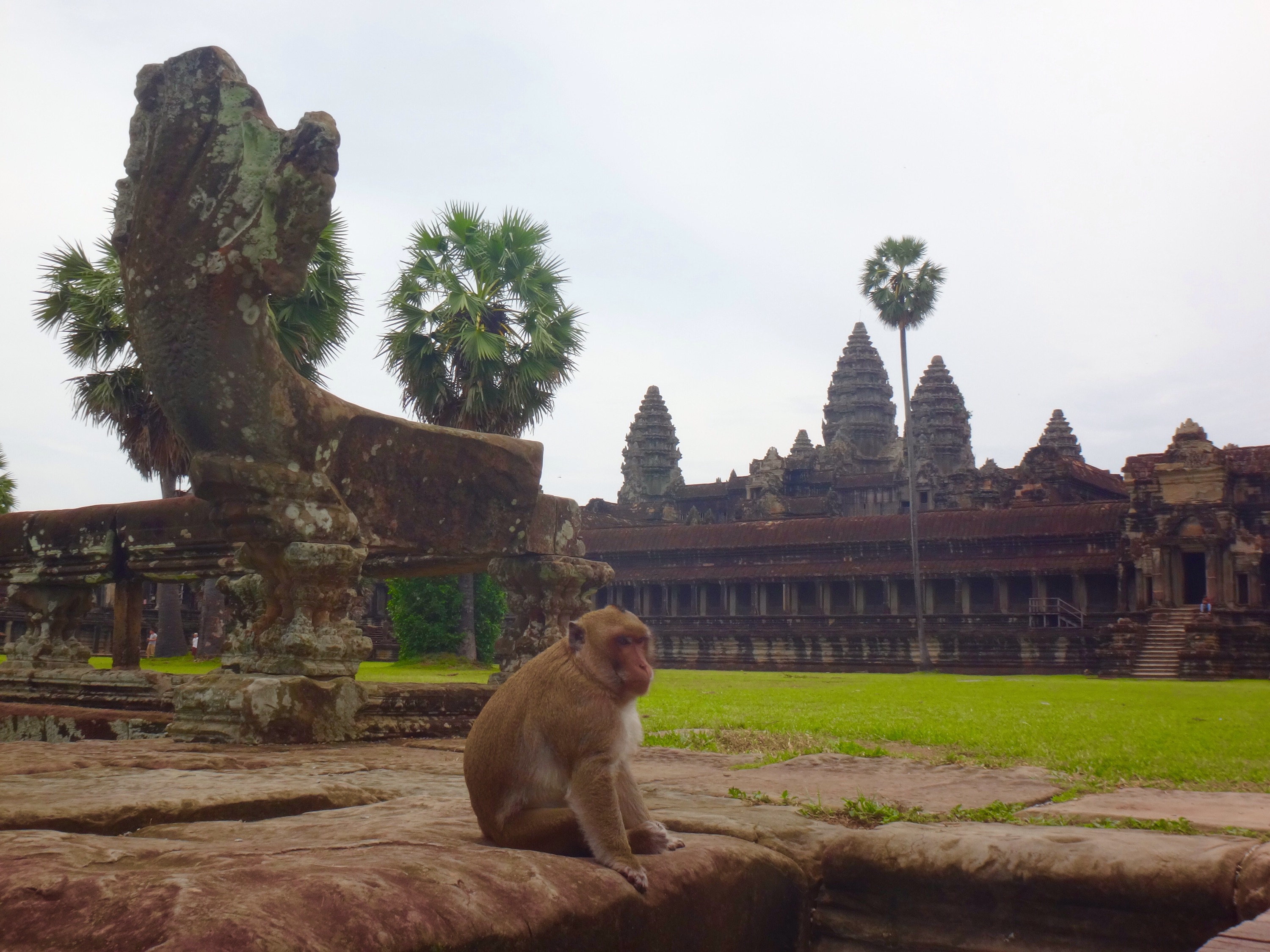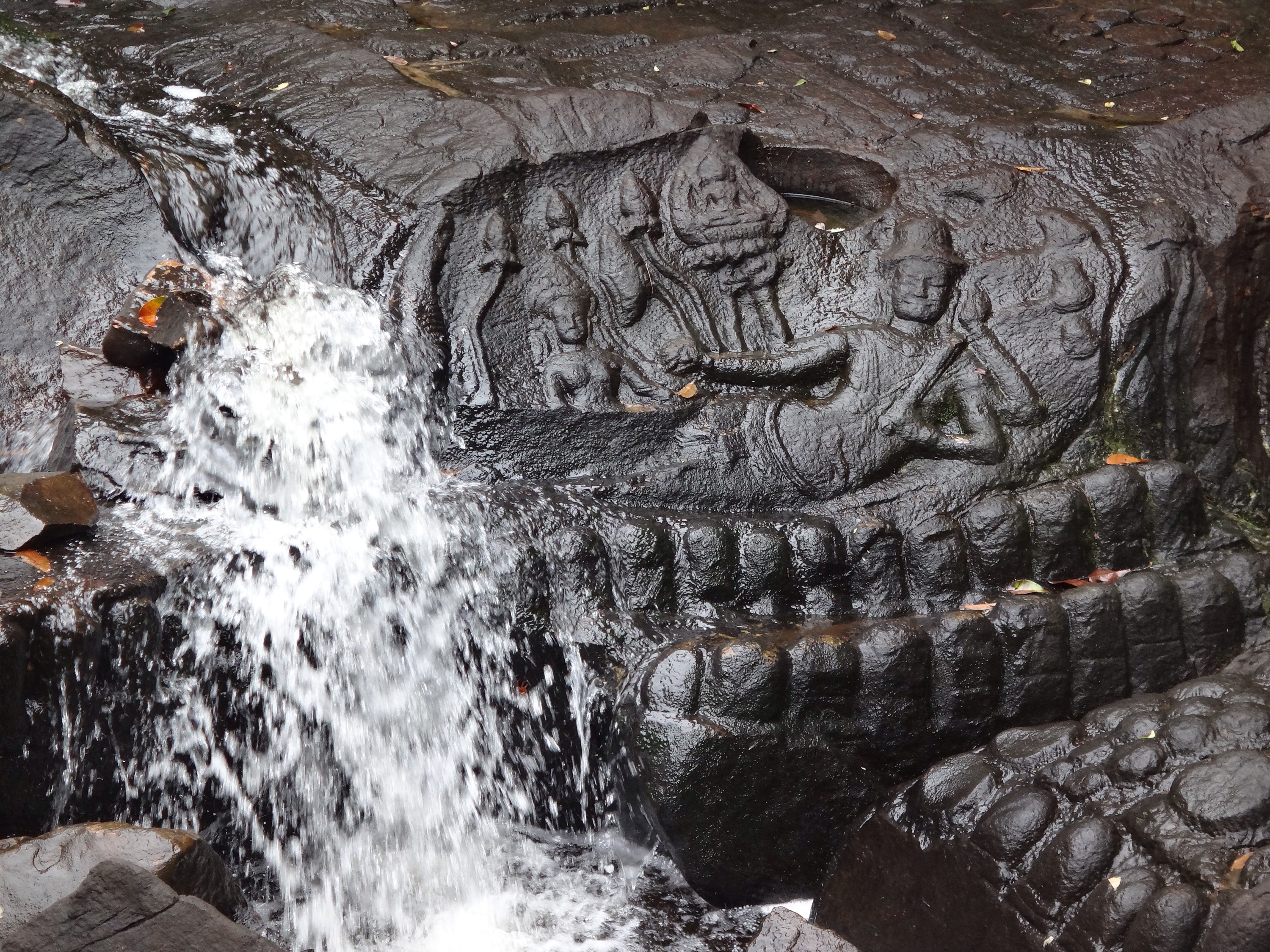
The majority of our time in Cambodia was spent visiting the +1,000 year old ancient city and temples of Angkor. Every morning, our friendly and informative tuk-tuk driver, Khan, would drive us about 20 minutes from Siem Reap to Angkor, the ancient and beautiful city built of ornately carved sandstone. The majority of the carvings on the temples were Buddhist and Hindu, with some Buddhas being scratched out by Hindus later taking over the temples. All the way around the walls of Angkor Wat, the biggest and most impressive of the temples, were detailed carvings of how the world began. According to Khmer (the people, language, and culture of Cambodia) the world began with angels and demons holding a big rope to churn the Sea of Milk for 1,000 years. The rope is often depicted as Naga, a snake that covered Buddha from the rain. This photo is a set of enormous demons holding Naga over a bridge that we crossed into one of the many temples in the area.

There were also many carvings of apsara, or dancers for the Gods. As luck would have it, we also managed to go see a tradiational apsara dance show to see how the carved dancers dressed and moved in real life. Even though the carved dancers were carved over 1,000 years ago, their resemblance was uncanny to the dancers in the show and it really brought the old carvings to life. In the photo below, it looks as if the dancers fingers are bent backwards unrealistically….but the real apsara dancers must have trained their double-jointed fingers for years because their precise and unbeliveable finger movements stole the show!

The most impressive part of viewing the UNESCO World Heritage Site, however, was not the ornate and stunning stone carvings. Instead, it was seeing the power of the jungle overcome the ancient manpower and stone. Angkor Thom, where Tomb Raider was filmed, was probably the most memorable and picturesque example of this.
After two days of gaping at ancient temples and ornately carved stone being taken over by jungle in the 9 km squared area of Angkor, we decided to head to Banteay Srei, another Angkor temple, and Phnom Kulen, a Khmer waterfall, which were about an hour and a half tuk-tuk drive away. The hike to the waterfall was 1500m into the jungle. Along the way, we passed more Chinese and French tourists than I count. But once we got there, it was serene. To our surprise, the stone that one of the smaller waterfalls passed over was carved, too! The waterfall was about 50km away from Angkor, and is likely where the ancient people got their sandstone to carve and create the beautiful city of Angkor.

As for Banteay Srei, it was likely the most ornately decorated of all the temples we saw at Angkor. In fact, it was Khan’s favorite temple because of this. The hour and a half tuk-tuk trip was defiitely well worth it!



Recent Comments